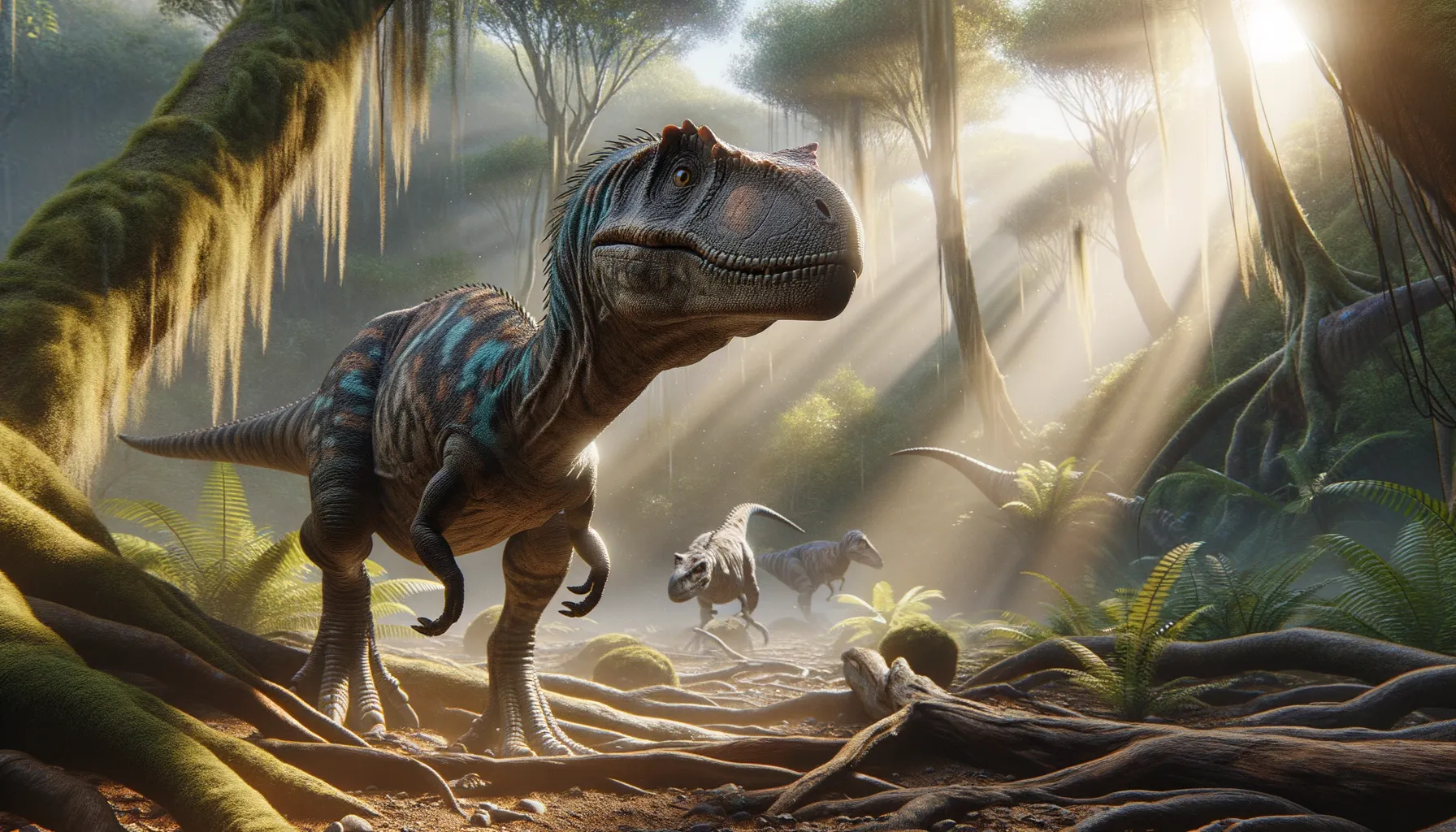
Staurikosaurus
Swift predator of the Triassic dawn.
Period
Triassic
Length
About 2 to 3 meters (6.5 to 10 feet) long.
Height
Approximately 1 meter (3.3 feet) tall.
Weight
Around 30 kilograms (66 pounds).
Staurikosaurus is one of the earliest known dinosaurs, hailing from the Late Triassic period. It was a small carnivorous dinosaur, known for its agile physique and swift movements, which helped it survive in the diverse landscapes of prehistoric Brazil. Its discovery helped paleontologists understand the early evolution of theropods, as it showcased traits linking it to later, larger carnivores. Despite its size, it played a significant role in its ecosystem.
Diet
Staurikosaurus was a carnivore, primarily feeding on smaller vertebrates. Its diet likely included small reptiles and possibly insects or other smaller prey available in its environment.
Hunting
As an agile and fast predator, Staurikosaurus could swiftly snatch its prey using its sharp teeth and quick reflexes. It might have relied on stealth and speed to surprise its prey before quickly overpowering it.
Environmental challenges
Staurikosaurus faced a number of environmental challenges, including avoiding larger predators and dealing with fluctuating climates of the late Triassic. The landscape was likely quite barren at times, forcing it to adapt its hunting strategies and seek out various microhabitats for shelter. Competition for food would have been another challenge, coexisting with similarly-sized carnivores.
Speed
Relatively swift for its size.
Lifespan
Lifespan estimated up to decades.
First discovery
Discovered in 1936 in Brazil.
Fun Facts
- Staurikosaurus was one of the earliest dinosaurs, living around 225 million years ago during the Late Triassic period.
- It was a relatively small dinosaur, measuring about 6.5 feet (2 meters) long, which is about the size of a large dog.
- Staurikosaurus walked on two legs and is considered one of the first theropod dinosaurs.
- Its name means 'Southern Cross lizard,' named after the constellation visible from the region where it was found in Brazil.
- The diet of Staurikosaurus likely consisted of small animals and insects, as it was a carnivore.
- Staurikosaurus had a lightweight body, which made it a quick runner, an advantage for hunting.
- Despite being discovered in 1936, complete information about Staurikosaurus remained elusive due to the lack of complete fossil records.
Growth and Development
Staurikosaurus grew relatively quickly from hatchling to adult, maximizing its chances of survival in a prehistoric world filled with larger predators. As it matured, it developed strong hind limbs and a sturdy tail to aid in balance and agility. The growth rate would have been influenced by the availability of food and environmental stability.
Habitat
Staurikosaurus inhabited what is now known as Brazil, thriving in a landscape characterized by forested areas interspersed with open plains. This environment offered a variety of microhabitats, from thick vegetation providing cover and protection to open areas favorable for hunting. Seasonal changes may have influenced its movement patterns as it adapted to find food and suitable living conditions.
Interaction with other species
Staurikosaurus likely coexisted with various other early dinosaur species and reptiles. While they might have competed for similar food sources, avoidance strategies such as hunting at different times or targeting different prey were possible. Direct confrontations with other predators could have occurred, testing its speed and agility.
Natural lifespan
Staurikosaurus likely lived a natural lifespan of several decades.
Reproduction
Reproduction likely involved laying eggs in protective nests, with hatchlings emerging ready to explore and fend for themselves. Parental care, if present, would have been limited and focused on initial protection of the nest to ensure offspring survival within a hostile environment.
Social behaviour
Staurikosaurus might have been solitary or formed small groups for hunting efficiency or companionship. Social interaction could have played a role during breeding seasons or when defending territories. Communication might have involved visual or vocal signals to coordinate hunting or ward off competitors.
Fossil locations
Fossils of Staurikosaurus have primarily been found in the Santa Maria Formation in Brazil, offering critical insight into early carnivorous dinosaur evolution. Limited fossil distribution indicates it was geographically restricted to its region, providing a snapshot of late Triassic dinosaur diversity. These fossils are fundamental to understanding prehistoric ecosystems.
